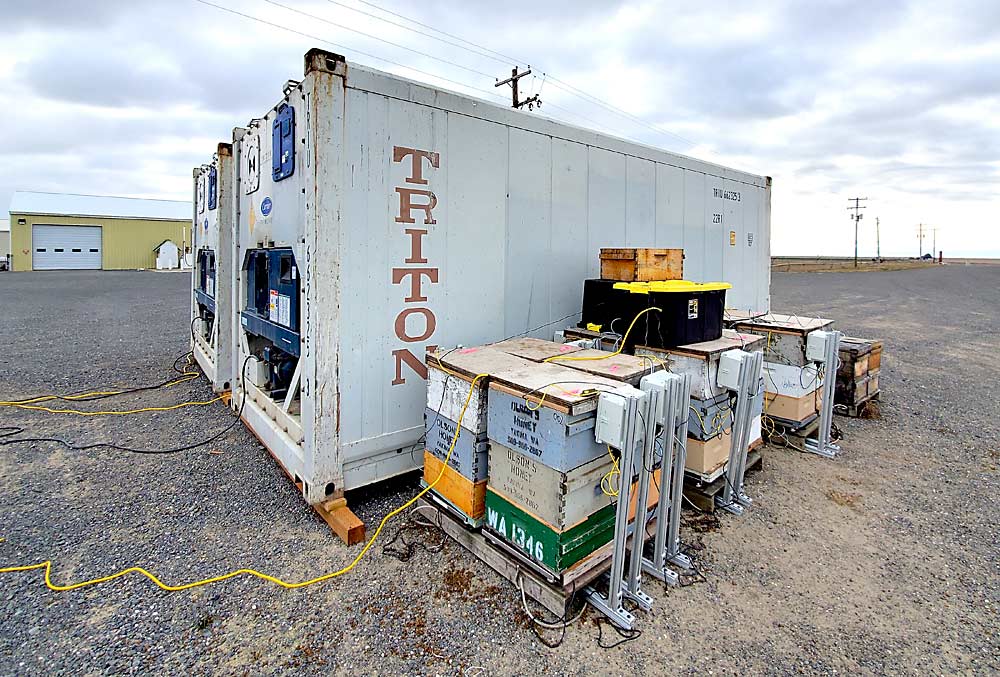
Several years ago, Washington State University entomologist Brandon Hopkins decided to see if indoor storage could boost honey bee colony health. Preliminary results were so promising that commercial producers are already adopting the concept while he continues to study the best ways to use it.
A Washington Tree Fruit Research Commission grant helped Hopkins purchase two shipping containers and equip them with interior atmosphere, temperature and humidity sensors. Some of the equipment was donated by Google X, an innovation facility started by Google.
The team placed the chambers at the university’s new bee facility near the Central Washington community of Othello, but the experiment got a late start last year after the sale took longer than anticipated to close.
Storing bees indoors reduces the impact from mites. Hopkins and his collaborators know that from small trials on refrigeration. The dark, cold conditions force the bees into hibernation, halting their reproduction, which leaves the mites without larvae on which to feed. That also leaves the mites more exposed to miticides, both organic and conventional.
The next step is finding parameters to guide indoor bee storage on a commercial scale. He has published one small extension booklet but aims to elaborate with more best-management techniques.
Beekeepers aren’t waiting for him, however.Several are renting space indoors at fruit facilities for winter storage, while some have built cold storage facilities in southern Idaho and North Dakota.
Hopkins is experimenting with both short- and long-term storage. Overwintering indoors is not a new concept; beekeepers have stored bees inside earthen cellars or indoor chambers for centuries. But using fruit warehouse space allows Hopkins to see if there is an advantage to controlled-atmosphere conditions over just cold and dark conditions.
However, Hopkins believes in some short-term storage gains, too.
Putting hives in indoor cold storage for a few weeks at critical points of the season gives them a break from brood production, allowing beekeepers to pace their chores and prevent hive theft, a problem in California, said Pat Heitkam of Heitkams’ Honey Bees in Orland, California.
Most of the beekeeping regions of California have weather warm enough for bees to fly year-round but often lack forage, Heitkam said. Cold storage gives them a break, protecting them from floods, fires and pests, while strengthening the financial relationship between beekeepers and the fruit and nut producers they support.
“It is changing the bee industry,” Heitkam said.
—by Ross Courtney
Related:
—Building a better bee
—Bees may do better being kept in the dark






Leave A Comment